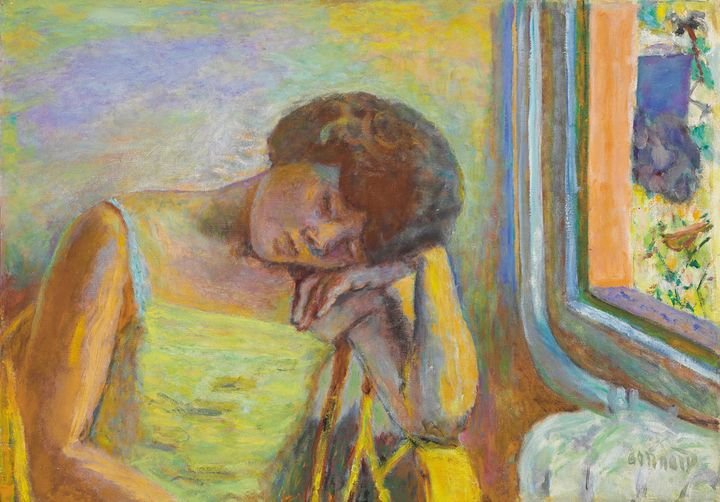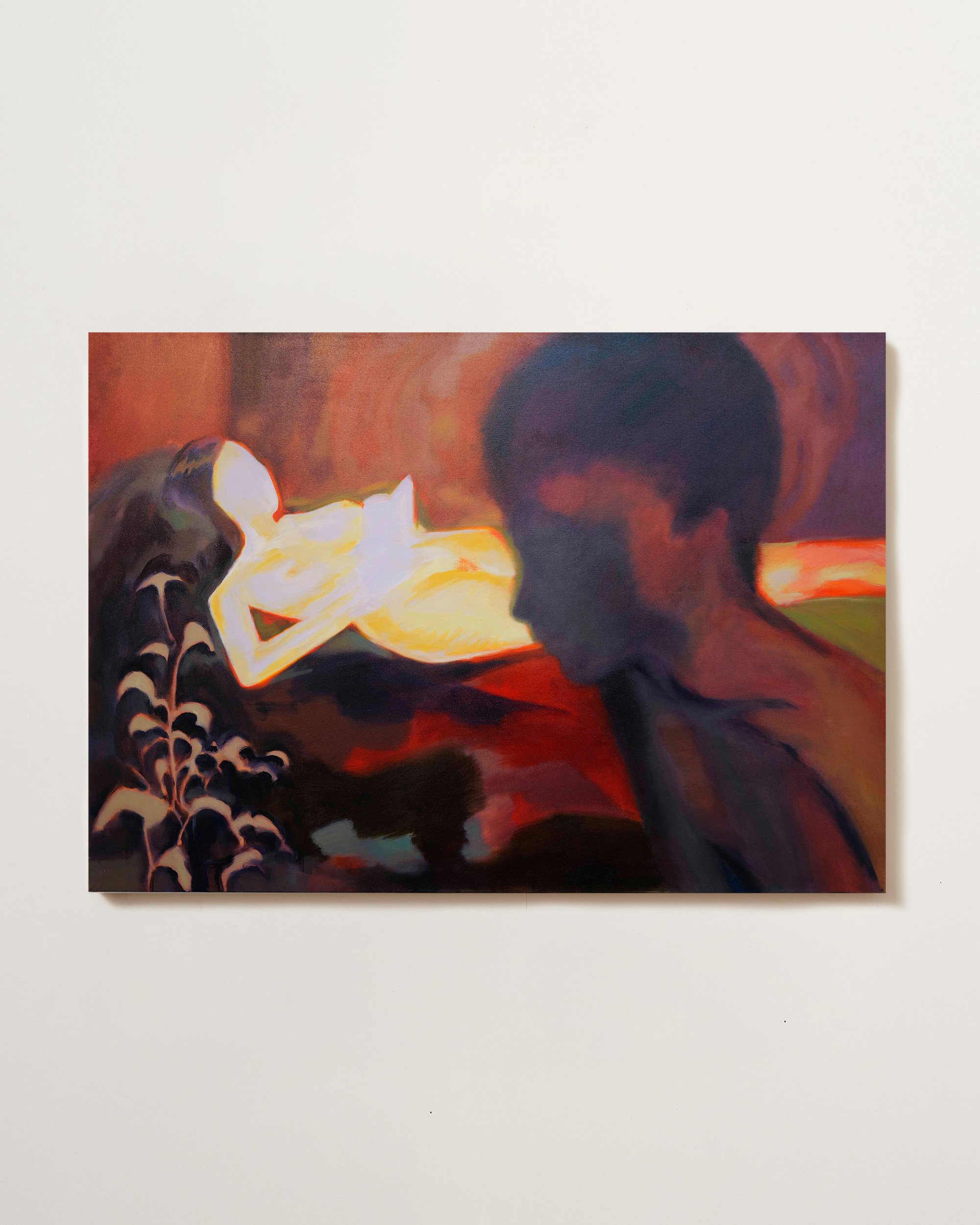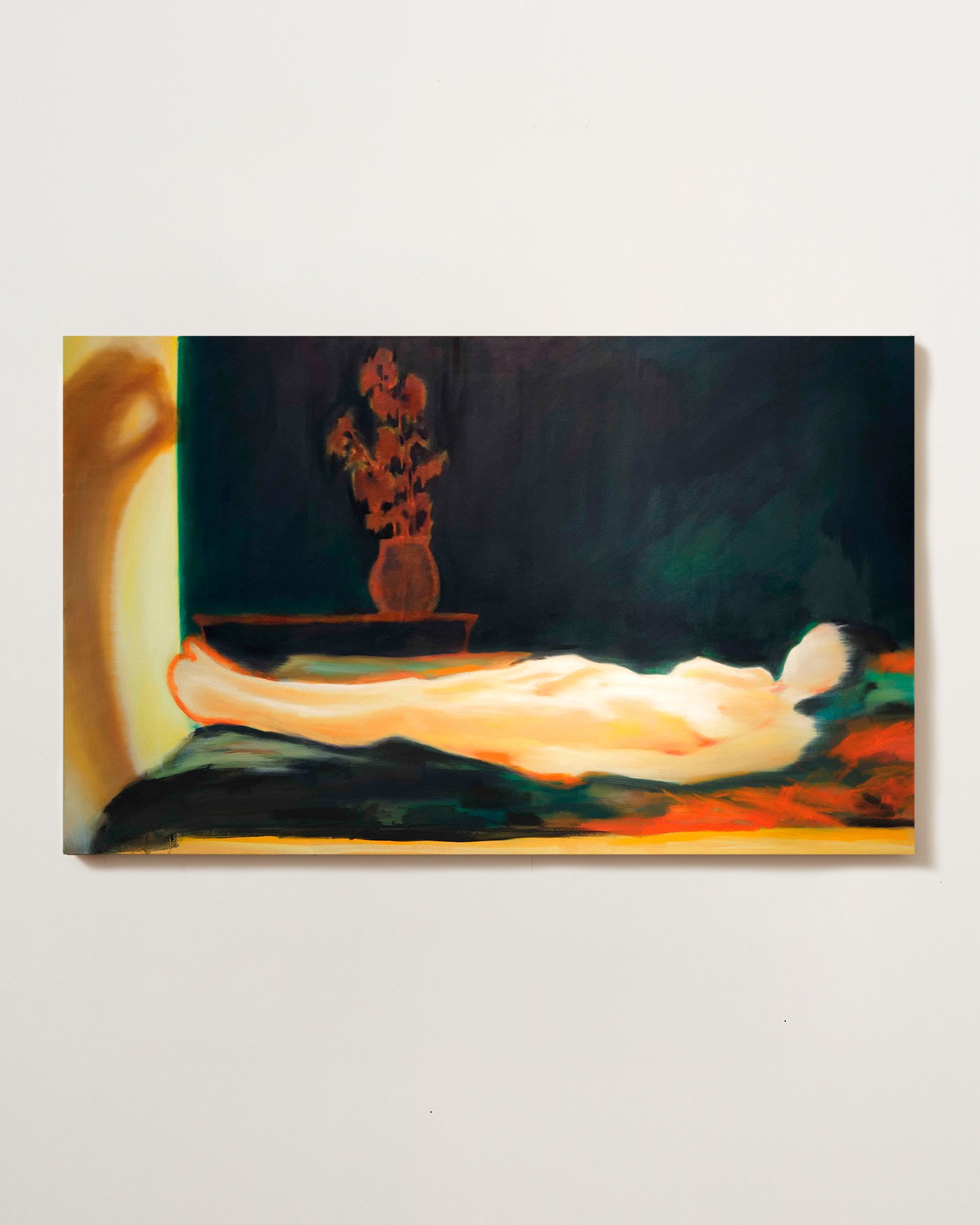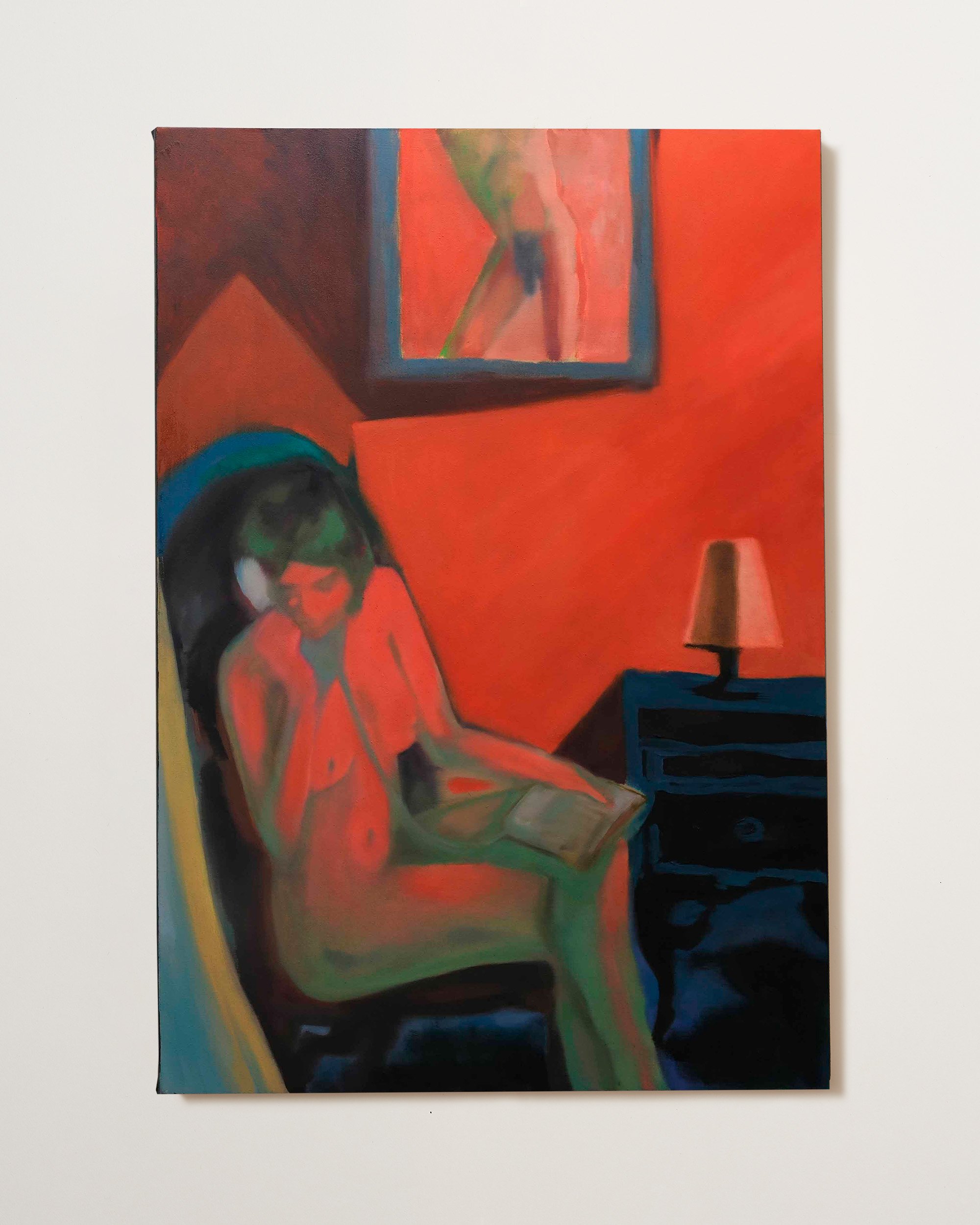INTERVIEW NATHAN HARBONN
INTERVIEW
NATHAN HARBONN: Revealing intimacy through painting
Parisian painter Nathan Harbonn opens the doors to his world, where everyday scenes take on an intimate, sometimes disturbing dimension. In this interview, he shares his vision of the role of art as a mirror of our times, exploring themes such as humanity, solitude, and our relationship with the body and nature.
What do you think you and your paintings have in common? That might be a good way to introduce yourself.
"Spontaneity is, I think, what transpires most of my personality in my paintings. A spontaneity that's almost embarrassing at times, naive; often, when I look at certain canvases, I'd like to veil this thoughtless side, but I don't have to. With oils, thanks to the superimposition of layers and drying times, I sometimes manage to dress up this spontaneity. With acrylics, it's a struggle. It's both something I'm proud of and the aspect I'm most modest about.
On the other hand, I think that eclecticism will be felt more and more as I move forward. This can be felt in my career path, having gone from making animated films, to writing, then finally painting.
I have this strong need for renewal that drives me to change my style and seek out other ways of creating. I doubt that the content really changes, but my painting is destined to change form regularly. "
What themes are close to your heart?
"The main underlying theme of my work is the relationship of the human being to the modern world, and therefore to himself. It's a peculiar relationship: the human being is both an all-powerful being and a fragile creature whose dignity has been marred. Our relationship with nature, love and spirituality has also been transformed. It's the consequences of this state of affairs that I'm trying to express.
Childhood, cataclysm, nature, religion, the couple, solitude and celebration are symbolic themes that often recur and enable me to put my feelings into images."
In your paintings, we often perceive the realm of the intimate. The viewer seems almost a voyeur in a scene to which he shouldn't have access. Where do these scenes come from and why do you paint them?
It's very difficult for me to say where these scenes come from, except from a mental pictorial space that's hard to describe. This mental space is profoundly intimate; what emerges from it, in order to retain its original power, cannot be veiled or censored. That would be the death of the image.
Painting has the advantage that it doesn't speak, that it's just an image, with no sequel. It's self-sufficient.
If it's to make an impression on the viewer, if it's to make him stop and question, it seems to me that you have to confuse him by revealing scenes to which, without painting, he wouldn't have access. Mental scenes full of poetry and crudely revealed.
As to why I paint these scenes, I'm not sure. Because they're there, in my head, because painting them is a pleasant outlet, vital perhaps. It's a personal quest, an identity quest too. Because I feel I understand the world better afterwards, and because I feel that image after image I'm getting better, and I want to know how far I can push this understanding of color.
Nudity also plays an important role, or at least appears regularly in your paintings. What role does the body play in your work?
"The fact is that even today, the body is quite taboo in society. It is never represented naked, always lightly veiled, covered, in a way that paradoxically sexualizes it. Only art still represents it naked, without artifice, in its purest form. And although it can be an object of desire, a naked body is much less suggestive of vice than a lightly clothed one. It's all a question of suggestion.
Painting naked bodies is something that came very naturally to me, perhaps because it harks back to ancient imagery, when man still had an intimate relationship with nature. I paint the naked body because it also allows me to create timeless scenes, not to mention the symbolic power it possesses. Whether we like it or not, the naked body is a powerful image in today's world, where all it takes is a bare breast to cause a scandal. Putting the body back at the heart of contemporary thinking means restoring its dignity, and cleansing it of the vices it is so wantonly given."
Who are the artists who inspire you?
"There are a lot of them, and for completely different reasons. As far as contemporary painting is concerned, I've recently had a renewed interest in the work of Cecily Brown, a very spontaneous style of painting on gigantic formats.
I'm also very interested in the work of Christine Safa at the moment, whose painting, and especially her touch and intensity of color, speak to me in particular.
Lou Ross and his almost abstract landscapes.
But as I didn't go to art school as such, I evolved mainly by looking at the moderns: Bonnard, Vuillard, Matisse..."
If you could live surrounded by any number of artworks, which would you choose to add to your collection and see every day?
I'd definitely choose a Bonnard. I keep coming back to Bonnard. I like the subjects, and his way of painting provokes in me a real lack of understanding, which is a special feeling for a painter. Not understanding how a painting is made... Often, you get a vague idea, you have clues. Bonnard remains a mystery to me.
I would add some Matisse to encourage me to dare colors, some sketches by Hockney, and a landscape by Vallotton because they soothe me deeply.


















